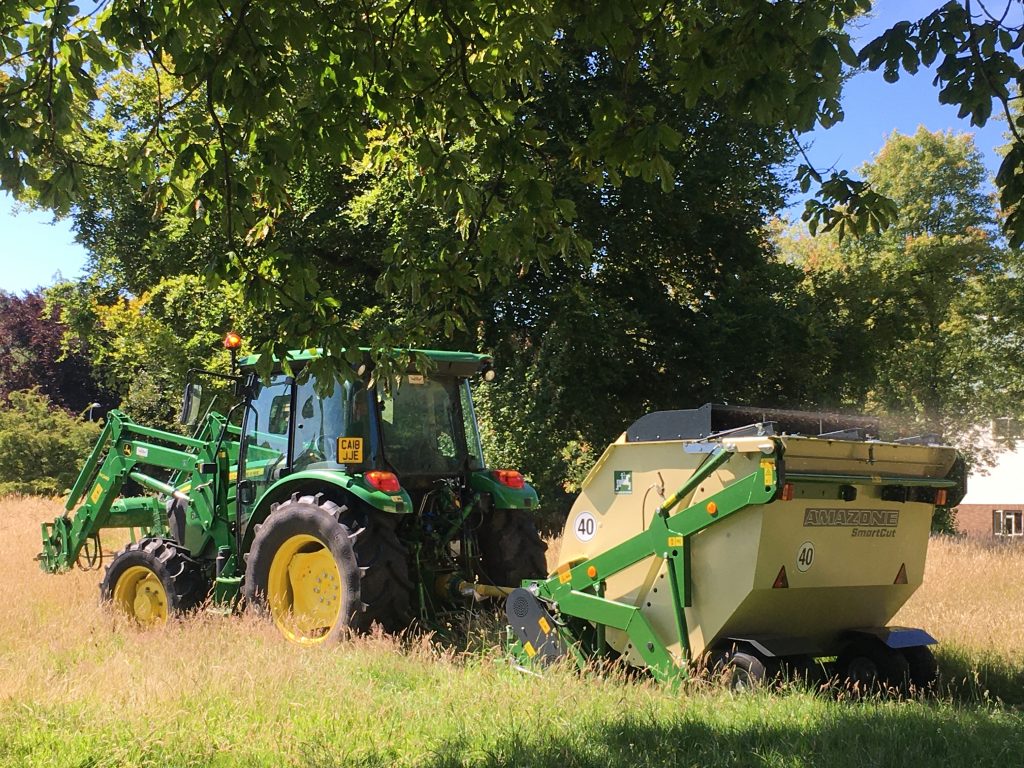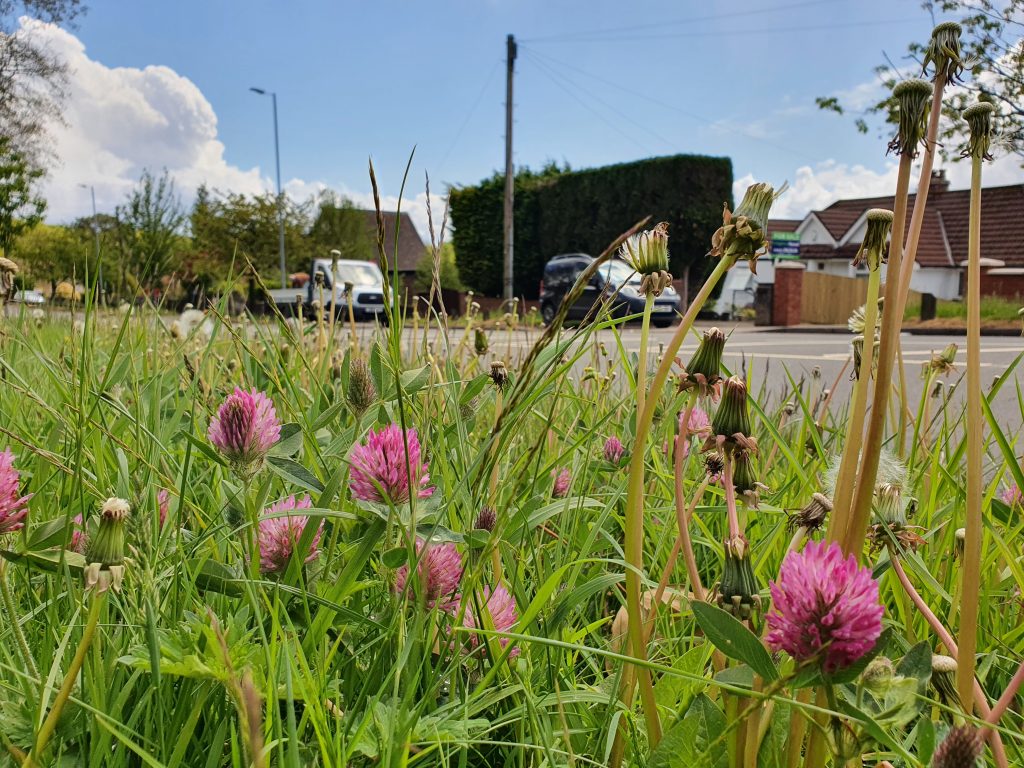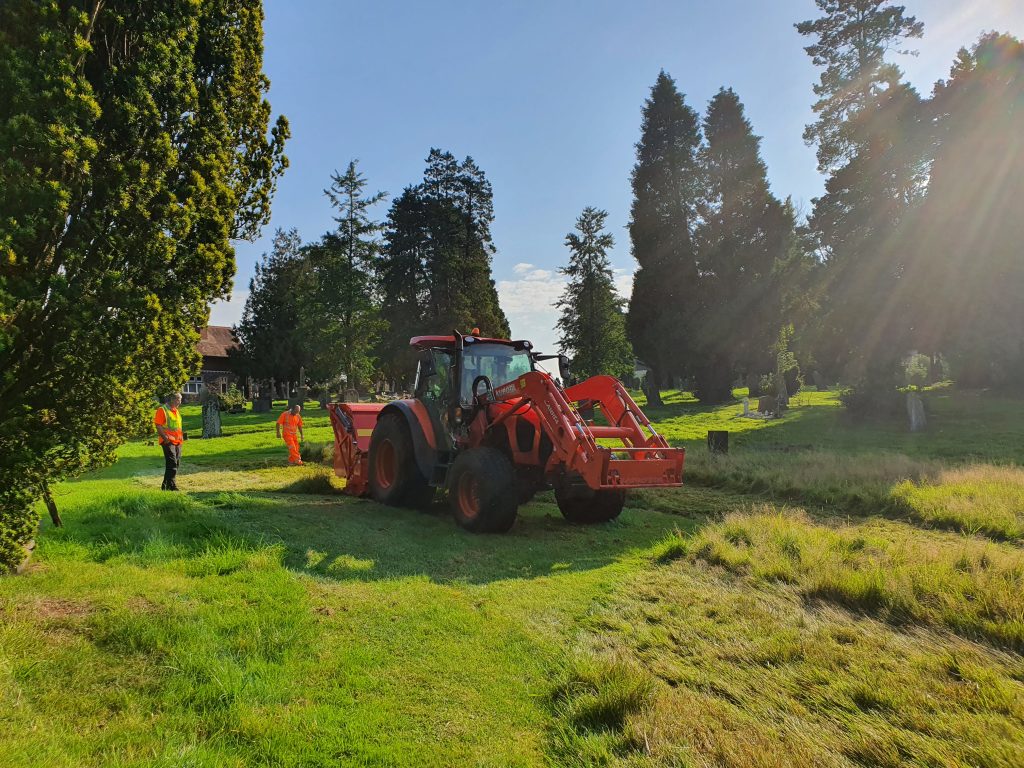Cut and Collect
The most important aspect of managing grassland for biodiversity is cutting and removing the vegetation – otherwise known as cut and collect. This is done after the wildflowers have flowered and set seed.
Annual cutting prevents vigorous grasses smothering the more delicate wildflowers and lets light get to the germinating plants next spring.
Removing the cuttings prevents them from decomposing and adding nutrients back into the soil. Nutrient-rich soil ensures low diversity as the most vigorous grasses and flower outgrow all the others and crowd them out. The most biodiverse grasslands have low nutrient levels, where delicate species can flourish.
Cut & Collect Trial
The Severn Wye Energy Agency and GGGP conducted a Cut & Collect Trial to explore efficient ways of utilising grass cuttings from Nature isn’t Neat grassland management techniques and assess the potential for carbon-neutral management.
At present grass arisings are mostly composted but have potential to be used in processes to make more use of the cuttings. However, there have been concerns about contamination by contamination, cost, time, and energy use in carrying this out at a large scale.
The trial considered the economic, climate and practical case for using grass cuttings as a carbon neutral feedstock in anaerobic digestion and biochar production through pyrolysis. Anaerobic digestion uses the cuttings to create a biogas for green energy production, in much the same way that our food waste is used. Biochar is a form of charcoal created through pyrolysis, a highly useful product which can be used to improve soil quality and sequester carbon for hundreds of years. For each tonne of biochar produced and sequestered around 2 tonnes of CO2e is removed from the atmosphere.
In our trial, grass samples from 15 locations of varying types of grassland that are managed by Gwent Green Grid partners were selected for study. Both methods proved feasible, with biochar production offering a carbon-sequestering solution that can enhance soil quality or be used in industry. The trial found no significant contaminants in the grass samples, making them suitable for these processes. A hybrid approach could optimise efficiency, potentially producing 1000 tonnes of biochar annually, removing 2000 tonnes of CO2e from the atmosphere, and advancing towards a fully carbon-neutral grassland management system.
You can read the full report here: Gwent Green Grid Cut and Collect Report



This post is also available in: Welsh
